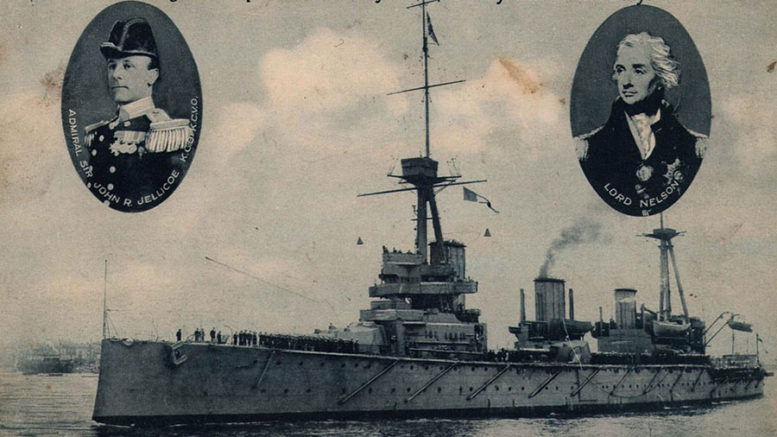Contributed by Glen Davis
On 25 April was ANZAC day. This is a time when the ending of the Great War is celebrated, and this is a time when Jingoism, militarism are displayed front and centre, yet behind the glossy rhetoric of the Anzac mythology there are areas we don’t go, as these areas don’t fit the mythology.
There were the troop mutinies on the Western Front in the concluding stages of the war, and the early riots at the training camp at Casula in NSW. Were these discussed in the centenary?
The following story about the HMAS Australia took place at the end of May.
HMAS Australia was the flagship of the Royal Australian Navy during this war. It served in various zones, from the waters adjacent to Australia, over to sinking an enemy supply vessel adjacent to South America in the first few months of the war; then performing patrols and escorts through the waters of the North Atlantic.
However, it saw minimal action during the war years.
HMAS Australia had a higher than usual number of the crew on disciplinary charges. Morale was low. As I mentioned, the boat saw very little action during the war.
There were concerns about pay and conditions, discrepancies between Australian and British crew members, with harsh discipline, all added up.
On 28 May 1919 the ship berthed in Freemantle to a joyous welcoming.
Despite requests from crew members, including quite a large number who hailed from Perth, for a full weekend offshore leave, Captain Cumberlege RN, only granted the crew a sole day.
Subsequently, the time in Fremantle ended with around 100 crew members gathering around the P turret, leaving their stations. After directions from senior officers, they returned to their posts, many grumbling.
However, when the ship went to depart, it was discovered the stokers had abandoned their posts. The engines couldn’t be run. A group of petty officers were forced to undertake these roles, finally allowing the boat to leave port after this delay.’
The frustrations of the previous few years reached their zenith, with the refusal of the weekend shore leave. It provoked this mutiny, one of the few in the history of the Royal Australian Navy.
Thirty-two of the crew were tried for mutiny. Twenty-seven faced the captain’s table, receiving 90 days in the cells.
In Sydney on 20 June, the other five were court martialed for their part in a mutiny.
Though the five pleaded guilty, requesting leniency, all were incarcerated for ‘joining a mutiny without violence.’ Sentences started at 12 months.
A public outcry followed.
In response, high level negotiations occurred between the Australian government, and the Admiralty, and it was subsequently deemed the punishment was too severe.
On 20 December the sentences were remitted. The men were released.
Following this, the ship’s captain and another senior officer resigned. The resignations were later withdrawn, though the enmity lingered in naval ranks.


Be the first to comment on "The truth about the HMAS Australia and the ANZAC mythology"